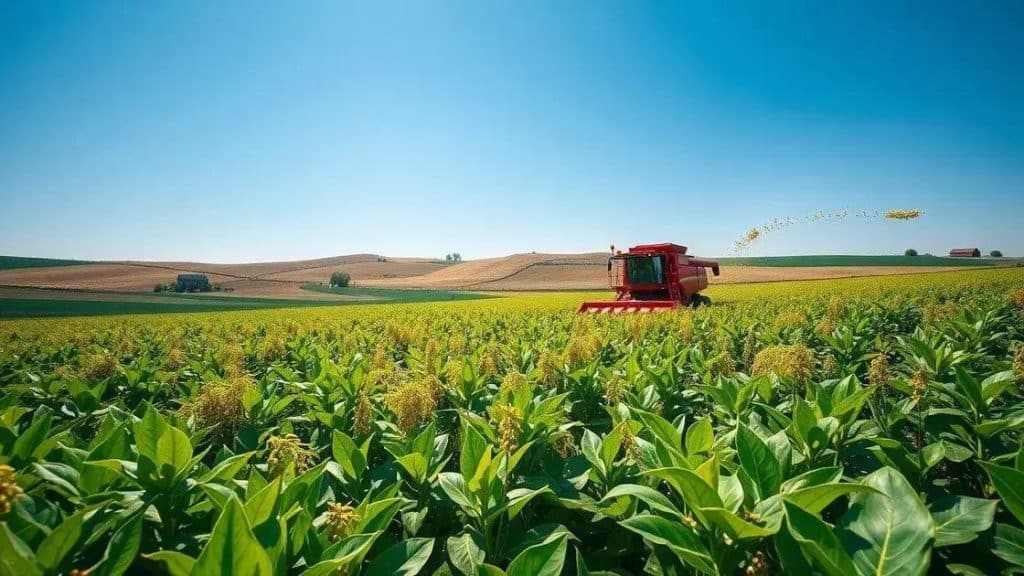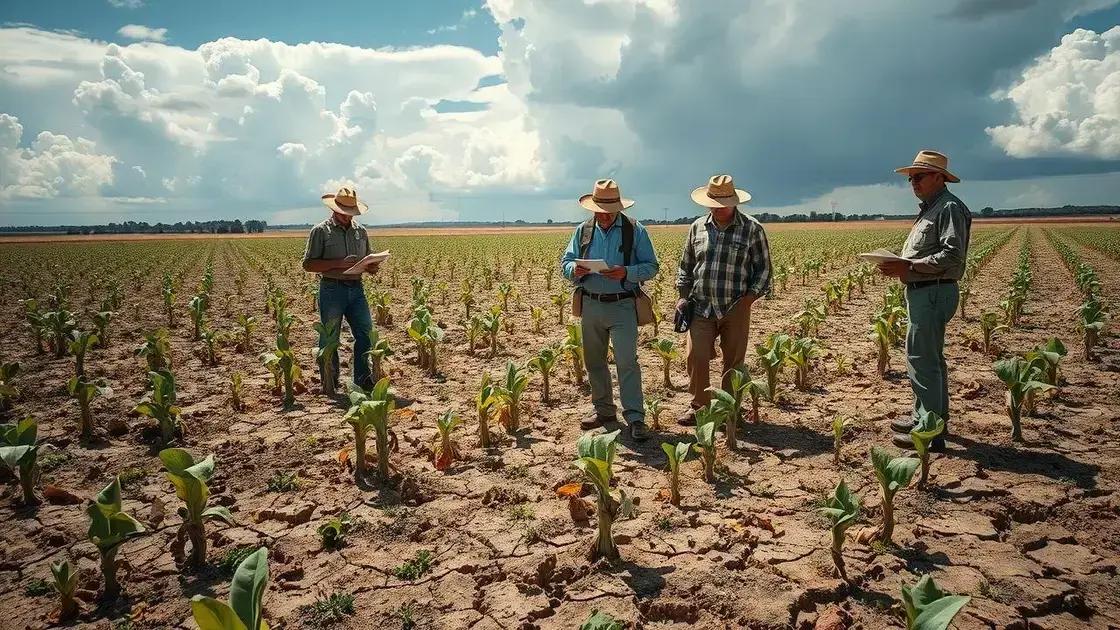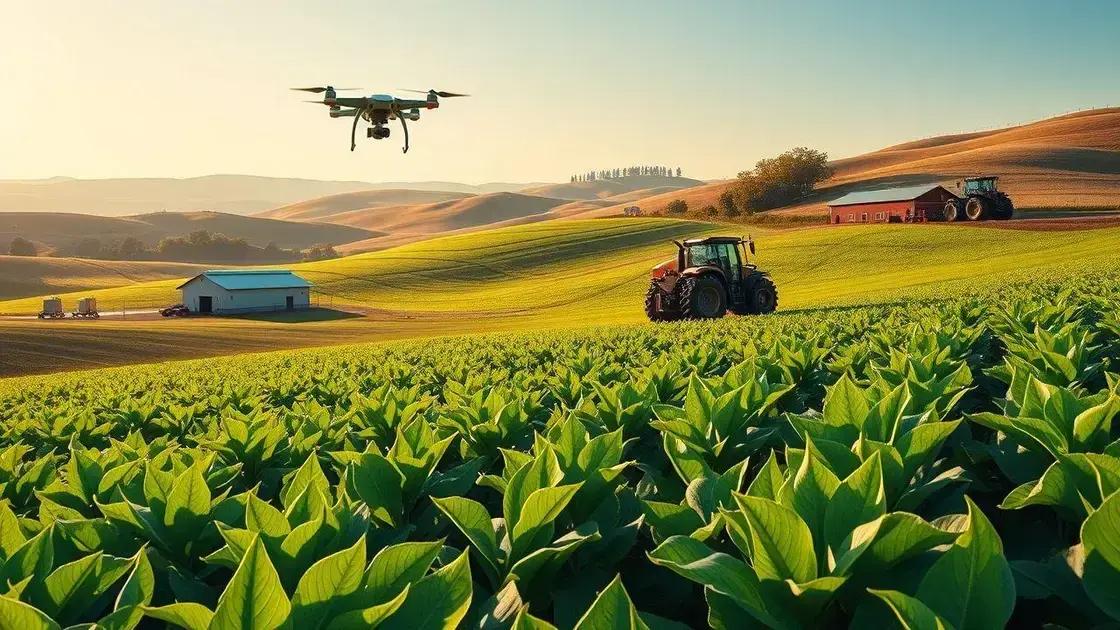Global demand trends for soybeans: what you need to know

Global demand trends for soybeans are driven by factors such as increasing population, climate change impacts on supply, technological advancements in agriculture, and evolving consumer preferences towards plant-based diets.
Global demand trends for soybeans have significant implications for farmers and investors alike. Exploring these trends helps us understand market dynamics and guides future decisions in agriculture. Curious about how these shifts impact our plates and farms?
Understanding global soybean consumption patterns
Understanding global soybean consumption patterns is essential for grasping the dynamics of the agricultural market. As soybeans become a key ingredient in many food products and animal feeds, analyzing these patterns can unveil critical insights into economic trends.
In recent years, the demand for soybeans has been influenced by various factors including dietary changes, government policies, and international trade agreements. Consumers are leaning towards plant-based diets, which has boosted the need for soybean oil and protein sources.
Key Areas of Soybean Consumption
Various sectors contribute to the overall consumption of soybeans. Understanding these sectors offers valuable perspectives for farmers and investors alike.
- Animal feed: A significant portion of soybeans is used as feed for livestock, especially in poultry and hog production.
- Food industry: Soy flour and oil are popular in many processed foods, making the food sector a major consumer.
- Biofuels: With growing environmental concerns, more demand for soybean oil for biodiesel production has emerged.
- Export markets: Countries like the U.S. and Brazil play a vital role in the global trade of soybeans, impacting local economies.
Shifts in these consumption patterns can greatly affect market prices and production strategies. For instance, if consumer preferences continue to shift towards plant-based products, we may see a corresponding rise in soybean cultivation.
Trade relationships also influence how soybeans are consumed globally. For example, China is one of the largest importers, and any changes in trade policies can significantly impact demand.
In summary, understanding global soybean consumption patterns gives us insight into factors driving the market and can help inform strategies for producers. As the demand evolves, staying updated on these trends is vital for making informed decisions.
Impact of climate change on soybean supply

The impact of climate change on soybean supply is becoming increasingly evident as global temperatures rise. Changes in weather patterns can directly affect crop yields and farming practices.
For instance, extreme weather events such as droughts and heavy rainfall can significantly disrupt soybean cultivation. Farmers may find it challenging to predict the best times to plant and harvest, which can lead to reduced production.
How Climate Change Affects Soybeans
Understanding the specific ways climate change influences soybean supply is crucial for adaptation strategies.
- Temperature changes: Higher temperatures can lead to heat stress in plants, negatively affecting growth and yield.
- Water availability: Drought conditions can limit water for irrigation, which is essential for successful soybean farming.
- Pest and disease prevalence: Warmer climates can increase the incidence of pests and diseases, posing further risks to soybean crops.
- Soil health: Changes in rainfall patterns can erode soil quality, affecting nutrient availability for the crop.
Farmers are adapting by employing various techniques to mitigate these challenges. For example, they may choose more resilient soybean varieties or enhance their irrigation systems to deal with variable water supplies. Moreover, using cover crops can help protect soil quality and moisture levels.
Looking forward, the interplay between climate change and soybean supply will require ongoing research and innovative farming practices. As farmers learn to navigate the complexities of a changing environment, they will play a critical role in ensuring food security for the growing global population.
Economic factors driving soybean demand
Economic factors driving soybean demand are essential to understand as they significantly influence both production and market prices. A variety of elements come into play in this complex landscape.
One major factor is the growth of the global population. As more people demand food, the need for protein-rich sources like soybeans increases. Countries are looking for effective ways to meet these dietary needs, often turning to soybeans as a versatile solution.
Key Economic Drivers
Several economic factors can reshape the soybean market. Recognizing these drivers can help stakeholders make informed decisions.
- Global trade policies: Tariffs and trade agreements can impact the prices and availability of soybeans, affecting how they are produced and sold internationally.
- Currency fluctuations: Changes in currency values can affect imports and exports, making soybeans more or less competitive in different markets.
- Feed and food industry trends: The demand from animal feed and processed food industries drives the need for soybeans significantly.
- Investments in agriculture: Increased investment in farming technologies can enhance production efficiency, affecting supply and prices.
As countries pursue sustainability, there is a rising interest in using soybeans for biofuels and other renewable energy sources. This transition could spur even more demand. Consequently, producers are adjusting their strategies to align with these economic trends and market forecasts.
Overall, the interplay of these economic factors is crucial for understanding what drives soybean demand globally. Stakeholders must continually evaluate these elements to succeed in an ever-evolving agricultural landscape.
Future predictions for soybean market trends

Future predictions for soybean market trends are essential for farmers, investors, and policymakers alike. Understanding what to expect in the coming years can guide decisions related to production and investment.
As the global population continues to rise, the demand for soybeans is expected to increase. This trend suggests that farmers may need to improve yields and expand their fields. Innovations in agricultural technology, such as genetically modified organisms (GMOs) and precision farming, could play a significant role in meeting this demand.
Market Influencers
Several factors will shape the future of the soybean market.
- Climate change: Shifts in weather patterns may affect crop yields, creating uncertainties in supply.
- Global economic conditions: Fluctuations in the economy can impact export markets and food prices, affecting demand for soybeans.
- Technological advancements: Improvements in farming techniques and crop management can lead to higher productivity.
- Consumer preferences: A growing trend towards plant-based diets could further increase the demand for soybeans.
In addition, trade agreements and policies will significantly affect the soybean market. Countries may establish new trade partnerships that could lead to increased exports or imports, impacting availability and pricing.
Farmers are encouraged to stay informed about emerging trends by participating in agricultural research and attending industry conferences. By adapting to changes and adopting new technologies, they can position themselves for success in an evolving market.
FAQ – Frequently Asked Questions about Soybean Market Trends
What factors are driving the demand for soybeans?
The demand for soybeans is driven by the growing global population, shifts towards plant-based diets, and the increasing use of soy in animal feed and biofuels.
How does climate change impact soybean supply?
Climate change can lead to extreme weather events, affecting crop yields and making agricultural practices more challenging for soybean farmers.
What technological advancements are influencing soybean production?
Technological advancements such as precision farming, genetically modified crops, and innovative irrigation techniques are helping to enhance soybean productivity.
How do trade policies affect the soybean market?
Trade policies, including tariffs and trade agreements, can significantly impact the prices, availability, and demand for soybeans in various markets around the world.





